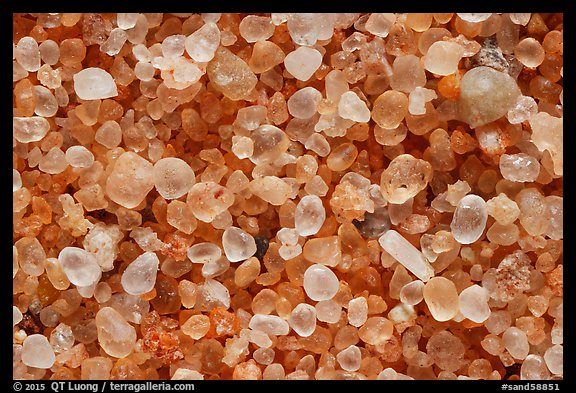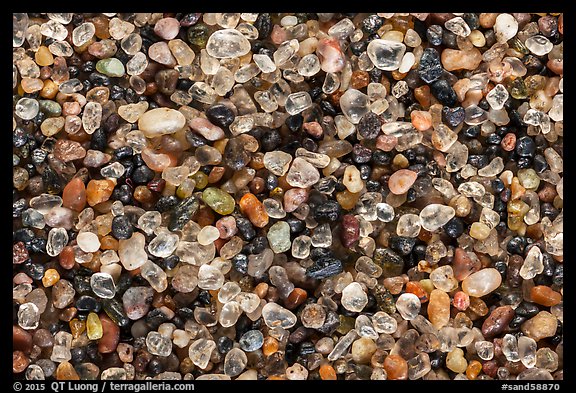The Hidden Beauty of Sand Grains
7 Comments
One of the wonders of nature is that, if you look close enough at just about anything, you will find unexpected wonder. In this new series of images, I examine the microscopic world of sand grains. High-magnification photography reveals beauty and variety normally hidden to the naked eye.
Can one really “See a World in a grain of sand” as poetically written by Blake ? In those images, we do get a good glimpse of the both surrounding environment and the impressive erosion processes. They have, over geological times, ground massive mountains as well as formerly living organisms to miniature gemstones less than a millimeter in diameter.
Pieces of quartz, feldspar and mica resulting from the breakdown of granite often form sand from mountains. In the Colorado Plateau, the sandstone shaped into world-famous whimsical formations produces extremely fine-grained, pink sand. Sand from a volcanic rock is dark. White sands of tropical coral beaches feature an assortment of reef animals: fragments of brightly-colored corals, seashells, and sponge spicules.
The story is told not only by the material composition of the grains of sand, but also their size and smoothness. Recently deposited sands such as those found in a mountain stream are angular, but after centuries of rubbing together, the grains of sand dunes become smooth and rounded, like tiny pebbles.
Because the size of the sand grains is an integral part of this story, I have kept the magnification constant within this series. The width of each frame is 7mm (1/5 of full-frame 35mm) corresponding to exactly 100 times magnification in a 20×30 inch print.
Naturally, the technical challenges of photographing subjects the size of table salt grains are considerable. At 5x magnification, depth of field is microscopic (0.04 mm or 40 microns at f/17). At the same time, the effective f-stop of a wide open f/2.8 lens becomes f/17, so if you stop down even moderately, diffraction very quickly ruins any sharpness. Those small effective apertures potentially result in slow shutter speeds, while, at this extreme magnification, the tiniest vibration causes image blur.
Although I have photographed several samples in California, Hawaii, Florida, as well as more exotic locations, many of my images of sand grains are part of my National Parks project. They constitute another sustained look at the diversity of the natural environment within the US National Parks, one that I hope is new to you. I think that it is the ultimate expression of the idea of “telling a large story with a tiny subject”, going well beyond my series The Ground.
In the future, I plan to offer an interactive display (similar to the 360 panoramas) to let you know explore at full magnification those images. I may also share my off-the-shelf, field-usable set-up. In the while, I’m inviting you to check out the shapes, textures, and colors of some sand grains found in Acadia, American Samoa, Arches, Crater Lake, Dry Tortugas, Great Sand Dunes, Haleakala, Olympic, Virgin Islands, Yosemite. Are you able you identify the corresponding national parks?










(for answers browse this page)
More High-magnification images of Sand Grains.


Love these. Great series. Keep up the wonderful work. 🙂
These are beautiful.
Your ideas for new directions in which to take your photography inspire me to try and think of my own. Thank you for your inspiration
What a great idea, QT. It’s interesting how different they are. You literally are finding the beauty in a grain of sand.
Thanks for your appreciation.
Wow I just stumbled across your website and love the clear pictures! They are rather mesmerizing. I especially like the sand58868 pic. Hard to believe it’s sand. Great microscopic photography 🙂
Great idea and beautiful images to illustrate, QT!